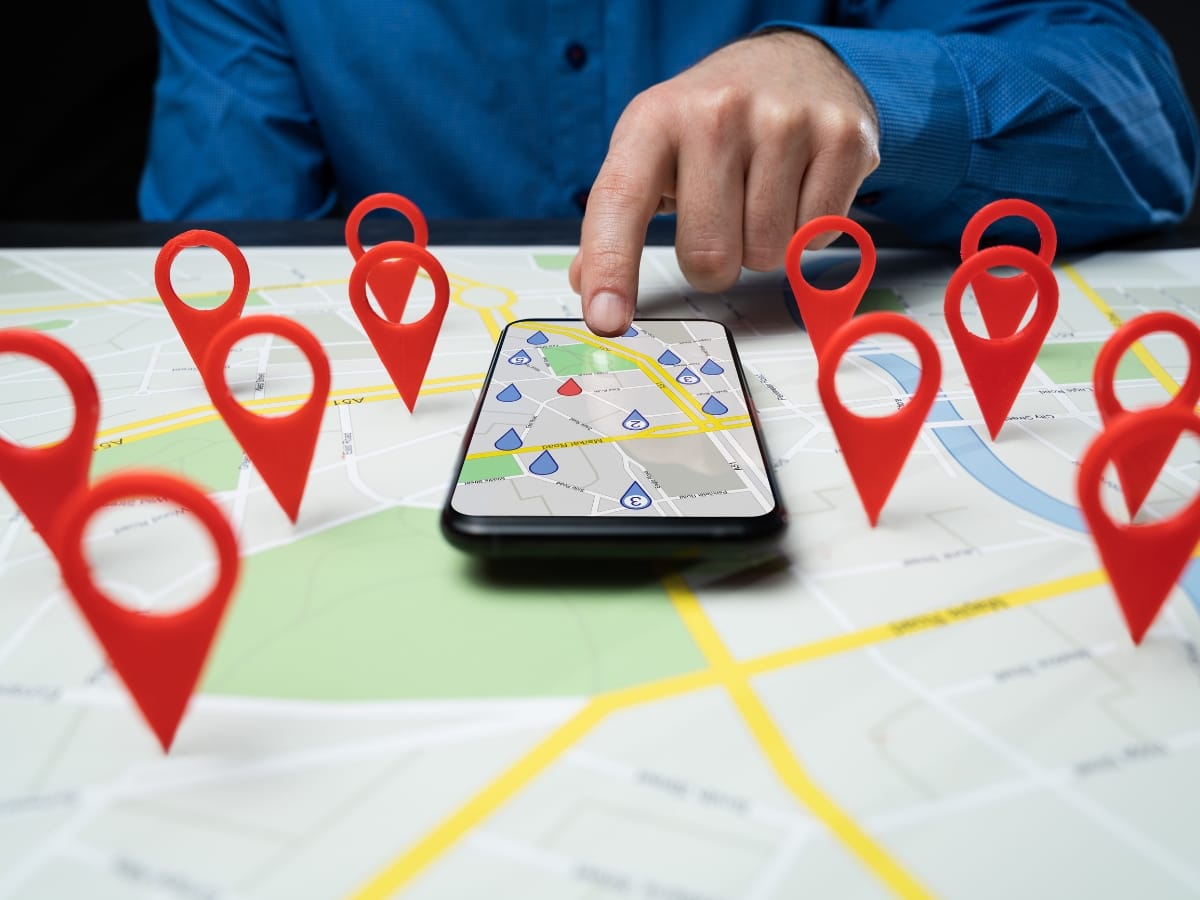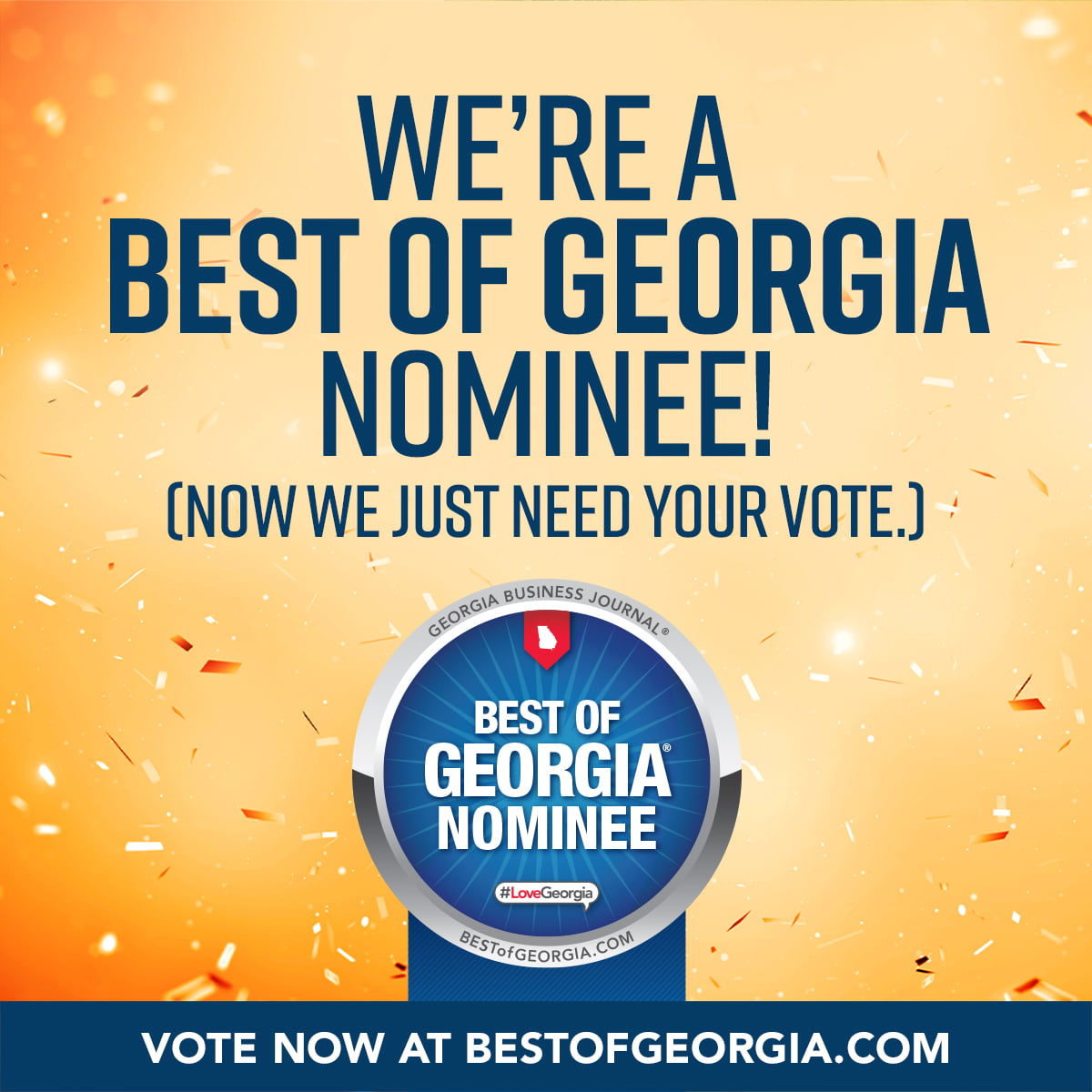Geo-fencing has emerged as a powerful tool in the digital marketer’s arsenal, enabling brands to deliver highly targeted messages and offers to potential customers when they enter a specific virtual boundary. By using GPS or RFID technology, businesses can create these invisible fences around physical locations—from a competitor’s store to a neighborhood event—and trigger personalized mobile ads, push notifications, or SMS messages to nearby devices. In this guide, we’ll explore how geo-fencing works, its practical applications across industries, and best practices for implementing targeted marketing campaigns that drive foot traffic, increase engagement, and maximize targeted marketing ROI with precision and relevance.
Geo-Fencing: Targeted Marketing Secrets for Local Businesses
What is Geo-Fencing Marketing and How Does It Work?

Geo-fencing marketing is a type of location-based advertising that triggers messages or ad views when a mobile device crosses a set geographic line. It works by combining GPS, Wi-Fi, cell tower data, device IDs, and ad platforms to detect presence and serve contextually relevant ads. The system links a geofence boundary to audience lists and ad tags, then sends push notifications, display ads, or social media ads when entry or exit events are detected. This generates measurable outcomes like store visits or coupon redemptions. Understanding these mechanics sets the stage for practical examples and a closer look at related proximity marketing tactics. We’ll next define geo-fencing, explain the tech stack, clarify proximity marketing terms, and differentiate geo-fencing from geo-targeting to help you choose the right campaign approach.
What is Geo-Fencing Marketing?
Geo-fencing marketing involves setting up a virtual perimeter around a physical location to deliver marketing messages, ads, or notifications to nearby mobile users when they cross that boundary. This method uses location triggers to send time-sensitive offers—like a discount when someone walks past your cafe—aiming to turn nearby attention into immediate visits or online actions. For small businesses, this could mean retail flash sales, restaurant lunch specials, or appointment reminders for local services. These examples highlight how context and timing boost relevance and the likelihood of conversion, showing why geo-fencing is a powerful local targeting tool.
How Does Geo-Fencing Technology Use GPS and Mobile Data?
Geo-fencing technology uses a mix of GPS signals, Wi-Fi, and cell tower triangulation, and mobile SDKs within apps and ad networks to pinpoint device locations and trigger events when a device enters or exits a geofenced zone. Advertisers upload geofence coordinates or draw boundaries around points of interest (POIs), then match device IDs with audience segments to serve ads in real time. Server-side tracking and device event logs record impressions and entry events for reporting. Measurement often combines ad analytics with store visit tracking and conversion modeling to link impression data to real-world outcomes, which is crucial for proving geo-fencing ROI. This technology stack enables precise proximity marketing, which we’ll explore next.
What are Proximity Marketing and Location-Based Advertising?
Proximity marketing is a broad term for tactics that engage consumers based on their close physical proximity to a location. Location-based advertising includes wider strategies using geographic signals for targeting across various channels. Proximity marketing often uses geofences or beacons to send immediate, context-aware messages when users are within tens to hundreds of meters of a POI. Location-based advertising can encompass broader regional targeting, radius targeting, or behaviorally inferred location segments. Use-case examples include beacons for in-store, aisle-specific experiences versus geofences for targeting customers near a competitor’s store. Understanding these distinctions helps marketers choose the right tool for the desired customer interaction. The next section will compare geo-fencing and geo-targeting to clarify when each approach suits an SMB’s goals.
How Does Geo-Fencing Differ From Geo-Targeting?
Geo-fencing differs from geo-targeting because geo-fencing acts as a real-time trigger based on physically entering or exiting a defined area. Geo-targeting, on the other hand, typically involves setting location parameters for ad delivery (like targeting users within a city during bidding) without necessarily relying on immediate entry events. Geo-fencing offers higher temporal precision and is ideal for timely offers and foot-traffic campaigns, while geo-targeting is effective for broader reach and awareness across a chosen geography. For SMBs, the advantage is using geo-fencing to capture immediate customer intent and geo-targeting for brand reach and frequency within a local market. Knowing these trade-offs informs campaign design choices. With these distinctions clear, we’ll move on to the benefits small businesses can expect.
What Are the Benefits of Geo-Fencing for Small and Local Businesses?

Geo-fencing delivers measurable local results by combining precise location triggers with contextual messaging to increase nearby visits, improve conversion rates, and strengthen brand awareness within your service area. It works by reducing wasted ad impressions through narrow local targeting, enabling offers at the moment of proximity, and linking impressions to store visits via device-level tracking and analytics. For small businesses, expect higher foot traffic, better ROI on ad spend, and improved performance of local digital channels when integrated with Local Service Ads and Google Business Profile signals. Below, we break down the key benefits, their mechanisms, and typical metrics for measurement.
You can compare different geo-fencing benefits by how they are achieved and measured.
| Benefit | Mechanism | Measured Value |
|---|---|---|
| Increased Foot Traffic | Proximity push notifications & contextual ads | Visits tracked via store visit attribution |
| Higher Conversion Rates | Timely offers and personalized creative | Conversion lift and sales per visit |
| Improved Brand Awareness | Repeated local exposures and retargeting | Local impressions, engagement, and repeat visits |
How Does Geo-Fencing Increase Foot Traffic And Customer Engagement?
Geo-fencing boosts foot traffic by sending timely, location-aware messages—like limited-time discounts or reminders—when potential customers are near your store. The immediacy of this mechanism drives higher intent to visit compared to general display advertising. Key performance indicators (KPIs) to monitor include the click-through rate on location-triggered ads, the visit rate (percentage of exposed users who visit within a defined window), and redemption rates for in-store offers. Together, these metrics reveal the conversion funnel from impression to visit to purchase. For example, a retailer could run a midday flash coupon within a 200-meter geofence and measure a spike in lunchtime visits and basket size, demonstrating direct impact. Understanding these mechanics helps shape engaging creative and timing for your campaigns.
What Impact Does Geo-Fencing Have On Conversion Rates And Sales?
Geo-fencing can improve conversion rates by aligning offers with immediate consumer intent and reducing the gap between discovery and action. Attribution is typically established through store visit tracking, unique coupon redemptions, or POS integration. Benchmarks vary by industry, but effective geo-fencing campaigns often show higher click-to-visit ratios than untargeted campaigns because the audience is physically close and receptive. Attribution methods range from deterministic visit tracking to probabilistic models that combine mobile location data with sales lift analysis. Using multiple methods strengthens confidence in measured sales impact. These measurement practices allow businesses to optimize their budget allocation toward high-performing geofences.
How Does Geo-Fencing Enhance Brand Awareness And Competitive Advantage?
Geo-fencing boosts brand awareness by enabling repeated, personalized exposures to local audiences and by allowing competitive targeting near rival locations. This increases top-of-mind recall in the immediate shopping context. Creative personalization—tailoring messages by time of day, event, or past visits—builds a local frequency advantage that can influence consumers at the decision moment. Retargeting sequences keep your brand visible after an initial proximity exposure. Over time, these tactics improve your local share-of-voice and support better performance on platforms that value engagement, giving you an edge over competitors relying solely on broad campaigns. Next, we’ll examine why this approach can be cost-effective for SMB advertisers.
Why Is Geo-Fencing A Cost-Effective Local Advertising Solution?
Geo-fencing reduces wasted ad impressions by limiting delivery to users near relevant locations, which lowers CPM waste and improves CPA and ROAS compared to broader digital campaigns that target by demographics alone. Cost factors include geofence size, audience scale, and desired frequency. When budgets are tuned to narrow geofences and specific dayparts, small businesses often see more efficient spending and measurable lifts in walk-ins per ad dollar. For instance, a small cafe running targeted morning promotions within a tight radius can better convert local commuters than a generalized social campaign, demonstrating a higher return per ad dollar. With cost-effectiveness clear, the next section explores which industries benefit most from geo-fencing.
Which Industries and Businesses Can Benefit Most from Geo-Fencing?

Geo-fencing is ideal for industries where physical presence and timing are crucial—retail, restaurants, events, auto dealerships, real estate open houses, and local services—because location signals strongly correlate with purchase opportunities. Common use cases include flash promotions for retail, lunchtime specials for restaurants, appointment reminders for service providers, and event-driven targeting for venues, each linked to KPIs like visit rate, redemption rate, and appointment bookings. Comparing industry applications side-by-side helps SMBs prioritize tactics that align with their business model and customer behavior. The table below highlights typical use cases and example KPIs for top industries.
| Industry | Typical Use Case | Example KPI |
|---|---|---|
| Retail | Flash sales, in-store promotions | Visit rate, basket-size uplift |
| Restaurants | Time-based offers (lunch/dinner) | Reservation rate, coupon redemptions |
| Service Providers | Appointment reminders, local offers | Booking rate, no-show reduction |
How Do Retail Businesses Use Geo-Fencing For Targeted Marketing?
Retailers use geo-fencing to announce flash sales, promote in-store events, and perform competitor conquesting by placing geofences around rival stores to deliver unique offers to nearby shoppers. Typical KPIs include visit rate, conversion rate from coupon to sale, and average order value uplift, which together demonstrate the campaign’s sales effectiveness. A practical campaign might trigger an exclusive same-day offer for shoppers within 300 meters during peak hours. Split-testing creative or geofence radius can optimize outcomes. These retail approaches show how precise local targeting turns nearby interest into measurable store visits and increased transaction value.
What Are Examples Of Geo-Fencing For Restaurants And Service Providers?
Restaurants can use lunchtime and happy-hour geofences to attract passing customers with limited-time menu deals. Service providers—like salons, auto shops, and medical offices—can use geofenced appointment reminders or first-time-visit promotions to convert nearby homeowners or commuters. Expected results include increased reservation or booking rates, higher coupon redemption, and improved customer retention when combined with follow-up retargeting. For example, a salon might target office parks during weekday afternoons with a new-client discount, measuring bookings generated from the geofence campaign to calculate CPA. These targeted, timely messages align offers with the customer’s immediate decision context.
How Can Small Business Owners And Local Entrepreneurs Leverage Geo-Fencing?
Small business owners can start with micro-campaigns using narrow geofences around their location or nearby partner businesses and events. They can use modest budgets to test messaging, radius, and timing. Practical tactics include partnering with complementary local businesses for shared geofences, running event-based promotions timed to foot traffic surges, and split-testing creatives to find the highest-converting offers. Measurement should focus on simple KPIs—visits, bookings, and redemption rates—to determine viability before scaling. Iterative optimization will refine targeting and creative for improved ROI. These low-budget, test-and-learn strategies make geo-fencing accessible to local entrepreneurs.
How to Set Up and Manage a Successful Geo-Fencing Campaign

A strong geo-fencing campaign starts with clear goals, precise boundaries, and creative messaging that connects with local audiences. The goal is to trigger ads or offers when potential customers enter a defined geographic area, encouraging them to visit your business or complete an action. For small businesses, success depends on aligning the campaign with real-world behavior and using targeted marketing tactics that maximize relevance.
Start by defining your objectives, whether that’s increasing foot traffic, boosting event attendance, or driving in-store purchases. Next, map geofences around strategic locations such as competitor storefronts, high-traffic intersections, or key community hubs. Once your zones are defined, create messaging that feels relevant to the moment—something that fits the location and context where users receive it.
Measurement is equally important. Use metrics like visits, conversions, or offer redemptions to gauge effectiveness, and adjust creative, radius size, or timing based on early results. This structured, data-informed approach helps you refine performance and increase returns over time.
What Are the Key Steps in Planning a Geo-Fencing Marketing Campaign?
The foundation of every successful geo-fencing campaign is a well-thought-out plan. Begin by setting specific goals, such as boosting weekday sales or improving brand awareness in a certain neighborhood. Once objectives are clear, define your key performance indicators and identify who you want to reach. Audience segmentation allows you to target first-time visitors, repeat customers, or nearby prospects differently, improving overall efficiency.
Creative planning comes next. Design ads that include a clear offer and an easy call to action that aligns with local intent, such as “Show this ad for a free upgrade today.” Budget planning should focus on reach, duration, and testing. Running an initial pilot campaign helps you validate performance data before committing to long-term spending.
What Are Best Practices for Mobile Geo-Fencing Advertising?
Effective geo-fencing marketing relies on balance—too wide a radius can waste impressions, while too narrow a range can limit reach. Keep your boundaries precise enough to capture relevant users without overextending your ad spend. Rotate ad creatives regularly to prevent fatigue and test different times of day to identify when engagement peaks.
Compliance is equally critical. Be transparent about data collection, respect user privacy, and provide opt-out options where required. Over time, review your campaign data to identify patterns in foot traffic, engagement, and conversions. Refining based on this data ensures steady improvement in both return on ad spend and customer response.
How to Integrate Geo-Fencing with Local SEO and Google Business Profile
When combined with local SEO, geo-fencing becomes even more powerful. For instance, geofenced ads can promote special offers tied to your Google Business Profile, encouraging customers to call, book, or visit in person. By aligning ad content with your online listings, you create a cohesive presence that drives both digital and in-person engagement.
Cross-channel consistency matters. Ensure that your ad copy, visuals, and offers reflect the same information that appears on your local profiles. Tracking calls, clicks, and visits together gives you a complete view of campaign performance. This integrated approach helps small businesses build stronger connections within their communities while using targeted marketing to maximize every impression.
What Are the Costs and Pricing Options for Geo-Fencing Marketing?

The cost of geo-fencing depends on factors like audience size, location density, campaign duration, and ad frequency. Most providers use one of three main pricing models: CPM-based media spend, flat monthly management fees, or a hybrid model that combines both.
In a CPM (cost per thousand impressions) model, advertisers pay based on how many times their ad is shown within the defined geofence. This structure is best suited for businesses that handle creative production and reporting internally. A managed service model, on the other hand, includes strategy development, campaign setup, ongoing optimization, and performance reporting. This option is ideal for small businesses that prefer a hands-off approach.
The hybrid model combines both, allowing companies to maintain control over creative assets while relying on external expertise for setup and optimization. Choosing the right pricing structure depends on your campaign goals, internal resources, and the level of support you need.
When comparing costs, focus on total value rather than just media spend. Consider how effectively each dollar contributes to visits, calls, or bookings within your target radius. A well-optimized campaign may have a higher upfront cost but typically delivers a stronger return through better targeting and reduced ad waste.
How Does Geo-Fencing ROI Compare to Other Local Advertising Methods?
Compared to traditional local advertising like print, radio, or static digital banners, geo-fencing offers far greater precision and measurable ROI. Because it targets users in specific physical locations, campaigns tend to reach people at the exact moment they are most likely to act. This precision reduces wasted impressions and increases the likelihood of conversions, making it one of the most cost-effective forms of targeted marketing.
For example, a restaurant could geofence nearby office buildings during lunch hours to attract local professionals. A retail store might target shoppers visiting nearby malls. Both cases deliver higher intent and stronger engagement than broad local ads that reach a general audience without context.
Geo-fencing also allows for real-time reporting, giving small businesses immediate insight into impressions, clicks, and store visits. This level of tracking helps refine campaigns quickly, improving performance over time. When measured against cost per acquisition and return on ad spend, geo-fencing often produces a better balance of reach, precision, and conversion efficiency.
Why Geo-Fencing Is a Smart Move for Targeted Marketing
Geo-fencing excels as a form of targeted marketing because it blends digital precision with real-world intent. Instead of relying on broad demographic filters, it focuses on where potential customers actually go. By connecting timing, location, and relevance, small businesses can deliver ads that feel immediate and useful rather than intrusive.
When executed properly, geo-fencing not only boosts sales and foot traffic but also strengthens brand visibility in local markets. As part of a larger targeted marketing strategy, it gives small businesses the tools to compete effectively with larger brands by reaching the right audience at exactly the right time.s include measurable foot-traffic attribution, better alignment between ad exposure and purchase opportunity, and synergies with GBP engagement and Local Service Ads that reinforce local visibility. When evaluating ROI, compare visit rates, conversions per visit, and incremental sales lift against baseline channels to determine when geo-fencing provides superior value.
How Can Small Businesses Get Started with Geo-Fencing Marketing?

Small businesses can start using geo-fencing marketing by setting clear goals, running a small test campaign, and refining based on results. The process begins with defining measurable KPIs, such as driving weekend visits or increasing local bookings. From there, identify a few high-traffic areas or competitor locations to geofence and create simple, location-relevant ad messages that encourage immediate action. A short pilot lasting two to four weeks helps validate which locations, offers, and creative assets perform best before expanding.
Starting small allows business owners to control costs while gathering valuable performance data. Once initial campaigns show positive results, scaling becomes easier with clear benchmarks for cost per acquisition and visit rate. Continuous monitoring ensures that each iteration improves targeting and conversion efficiency.
What Should Small Business Owners Expect from a Geo-Fencing Consultation?
A geo-fencing consultation typically focuses on strategy alignment, audience mapping, and performance forecasting. During this stage, consultants or in-house teams assess your current marketing footprint, identify key audience zones, and recommend realistic KPIs. You’ll review what types of campaigns align with your business goals, from attracting walk-ins to boosting event attendance.
Expect a straightforward discussion that clarifies how geo-fencing fits within your broader targeted marketing efforts. You’ll also receive guidance on campaign setup, estimated budget, and the reporting framework used to evaluate performance. This process helps eliminate guesswork, giving you a clear roadmap to test and refine local advertising efforts effectively.
How to Measure and Monitor Geo-Fencing Campaign Success
The success of a geo-fencing campaign depends on accurate tracking and consistent reporting. Key performance metrics include impressions, click-through rates, visit rates, and conversions such as purchases or bookings. Integrating your campaign data with POS systems, CRM tools, or booking platforms can help link digital exposure to real-world outcomes.
Monitoring should be ongoing, with weekly reviews during pilot campaigns and monthly reports for long-term efforts. These insights reveal which locations, ad messages, and time slots drive the strongest engagement. Adjusting elements like geofence placement or creative content based on data trends ensures campaigns remain effective and efficient.
Why Geo-Fencing Is an Effective Tool for Targeted Marketing
Geo-fencing excels as a targeted marketing strategy because it reaches potential customers in real time, within a defined physical area. For small businesses, this means every ad impression is shown to someone who’s already nearby and more likely to act. Unlike broad digital advertising, geo-fencing focuses on immediate relevance, turning location into a competitive advantage.
By combining data-driven targeting with creative messaging, businesses can deliver timely promotions that feel personal and local. When done right, geo-fencing doesn’t just increase visibility—it drives measurable outcomes like higher foot traffic, repeat visits, and better ROI. It’s a practical, results-focused form of targeted marketing that gives small businesses a powerful edge in their local markets.
Frequently Asked Questions Geo-Fencing

What Types of Businesses Can Benefit from Geo-Fencing Marketing?
Geo-fencing marketing works best for businesses that depend on local traffic or quick customer decisions. Retail stores, restaurants, auto dealerships, salons, and event venues often see strong results because their customers are already nearby and ready to act. By sending timely promotions or location-based reminders, these businesses can turn proximity into immediate conversions. Geo-fencing also helps niche industries, such as real estate agents or event organizers, target competitors’ locations or specific venues to reach high-intent audiences.
How Can Small Businesses Ensure Compliance with Privacy Regulations When Using Geo-Fencing?
Compliance starts with transparency. Small businesses using geo-fencing should always inform customers when location data is collected and how it will be used. This means obtaining clear consent, offering easy opt-out options, and limiting data storage to what is necessary. Aggregated or anonymized data is preferred for reporting since it reduces privacy risks. Business owners should also stay up to date with evolving data protection laws to ensure their campaigns meet regional and national standards. Being transparent not only keeps operations compliant but also builds trust with local customers.
What Are Some Common Challenges Businesses Face When Implementing Geo-Fencing?
The biggest challenges usually involve accuracy, creative relevance, and data tracking. Setting up precise boundaries can be difficult, especially in areas with dense signals or overlapping businesses. Crafting ad content that feels relevant to the user’s location and timing is another key hurdle, as poorly timed or generic messaging often goes unnoticed. Measuring campaign performance can also be complex, requiring integrated tools to connect digital impressions with physical visits or purchases. Addressing these challenges requires careful testing, clear targeting, and continual optimization.
How Can Businesses Measure the Success of Their Geo-Fencing Campaigns?
Success in geo-fencing marketing is best measured through metrics like click-through rates, conversion rates, and visit frequency. Tracking store visits or coupon redemptions helps connect digital engagement to real-world outcomes. Businesses should also monitor campaign reach and engagement over time to identify which messages and locations perform best. By comparing results against initial goals, such as increasing foot traffic or generating local leads, teams can fine-tune their targeting strategy for stronger returns. Consistent reporting and adjustment are key to maintaining campaign effectiveness.
What Creative Strategies Can Enhance Geo-Fencing Marketing Efforts?
Strong creative execution is what turns geo-fencing from a technical tactic into a powerful marketing tool. Ads should feel timely and relevant, such as promoting lunch specials during mid-day or limited-time discounts during local events. Using personalized offers, seasonal visuals, or location-specific messaging makes content more engaging. Businesses can also encourage repeat visits through loyalty rewards or gamified promotions tied to location triggers. Testing multiple creative variations and analyzing engagement data ensures the message stays fresh and effective.
Can Geo-Fencing Be Integrated with Other Marketing Strategies?
Absolutely. Geo-fencing becomes even more powerful when combined with other targeted marketing strategies. For example, syncing geo-fenced campaigns with Google Business Profile updates or Local Service Ads can boost both visibility and conversion rates. Promoting location-based offers through paid search or social media creates consistent messaging across platforms. This integrated approach helps small businesses maintain a unified brand presence while reaching customers through multiple touchpoints, ultimately improving engagement and driving measurable local growth.
Conclusion
Geo-fencing has transformed location-based marketing, allowing brands to engage potential customers with unprecedented precision and relevance. But to truly capitalize on this technology, you need a strategy that blends the right tools with creative messaging and clear goals. At Newman Web Solutions, we help businesses design and deploy marketing campaigns that drive foot traffic, boost conversions, and maximize ROI. Ready to target your audience where it matters most? Call (404) 301-9189 or schedule your free 30-minute strategy session today—and start turning location data into measurable business growth.





